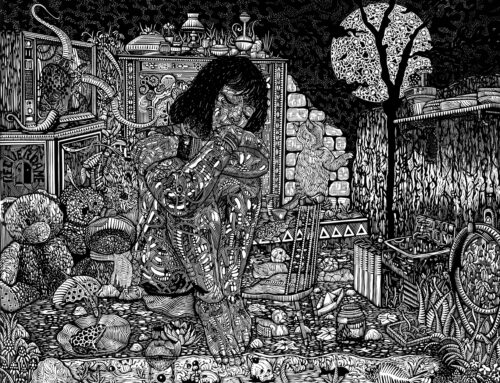
White Rock Lake is to artist CHRIS McHENRY what Water Lily Pond was to Claude Monet — McHenry doesn’t paint White Rock scenes because the lake is well-known, but rather because he hopes his attention to detail, and nostalgic and realistic touch might make our neighborhood gem known to art lovers around the globe. He’s well on his way — McHenry, along with his paintings of familiar-to-us landscapes and cityscapes, was featured in the November/December 2009 edition of International Artist magazine.
Is painting your primary occupation?
That’s what I do full-time these days. I first studied architecture and had to take a lot of art classes. I found that what I liked about architecture was the drawing and rendering. After that, I sort of eased into fine arts studies.
Looking at your work, it seems you have a fondness for White Rock Lake.
Yes. Even when I lived in Grand Prairie, when I was painting billboards for a living, I used to drive all the way to White Rock Lake. There aren’t too many urban areas where you have a lake with so much variety — the wetlands, the hills, the reflection of clouds on the water. When we looked for houses 10 years ago, we happened to come across one near the lake, with a bedroom with a view of the lake that I use as a studio. The neighborhood is perfect, and that it is by White Rock is the icing on the cake.
What else do you like painting?
Places I am extremely familiar with that have a universal appeal — in a way that appeals to others who aren’t familiar with the spot. For example, I did a painting of the west side of the lake and someone told me it looked like a scene from their vacation home in Michigan. With something like that, I feel I’ve accomplished my goal. I try not to make the work look generic though — I don’t want to lose the specifics that make a place look real. The Turtle Creek area has a similar sense of scale (to White Rock Lake) with the natural and urban juxtaposition. You even feel that Downtown when you see an old turn of the century building next to new, enormous skyscrapers.
You mentioned painting billboards — What was that like?
I went to school in New Orleans, and I worked in a shipyard and saw these guys painting billboards, and thought it looked fun. At the time, yes, we actually climbed up and painted the billboards. Some of them were high, and the job could get amazingly scary. When I was in my 20s, I had a job painting a cigarette ad on a billboard that was about 100 feet up in the air. When billboards are that high, they sway in the wind and it was windy the entire time we were on that job [5-6 long days].
Then you decided landscapes were safer?
Yes, but it took some time before I was able to quit my day job. The first show I did lasted a month, and I did not sell a single painting. But a dealer went on to show them to clients. In the next few weeks, she sold all four of my paintings — three of them to Roger Staubach. When I actually met Staubach a few years ago, I introduced myself and I told him that when he bought those paintings, I quit my day job. He responded, “How’s that working?”
Do you actually set up at the scene to paint?
I do some paintings on location, others I set up and paint for color combinations. Many famous artists have painted scenes of places that weren’t famous or remarkable at the time they were painted, but after they were painted, they became well known. That is one of the things I keep in mind when painting Dallas and our neighborhoods.





